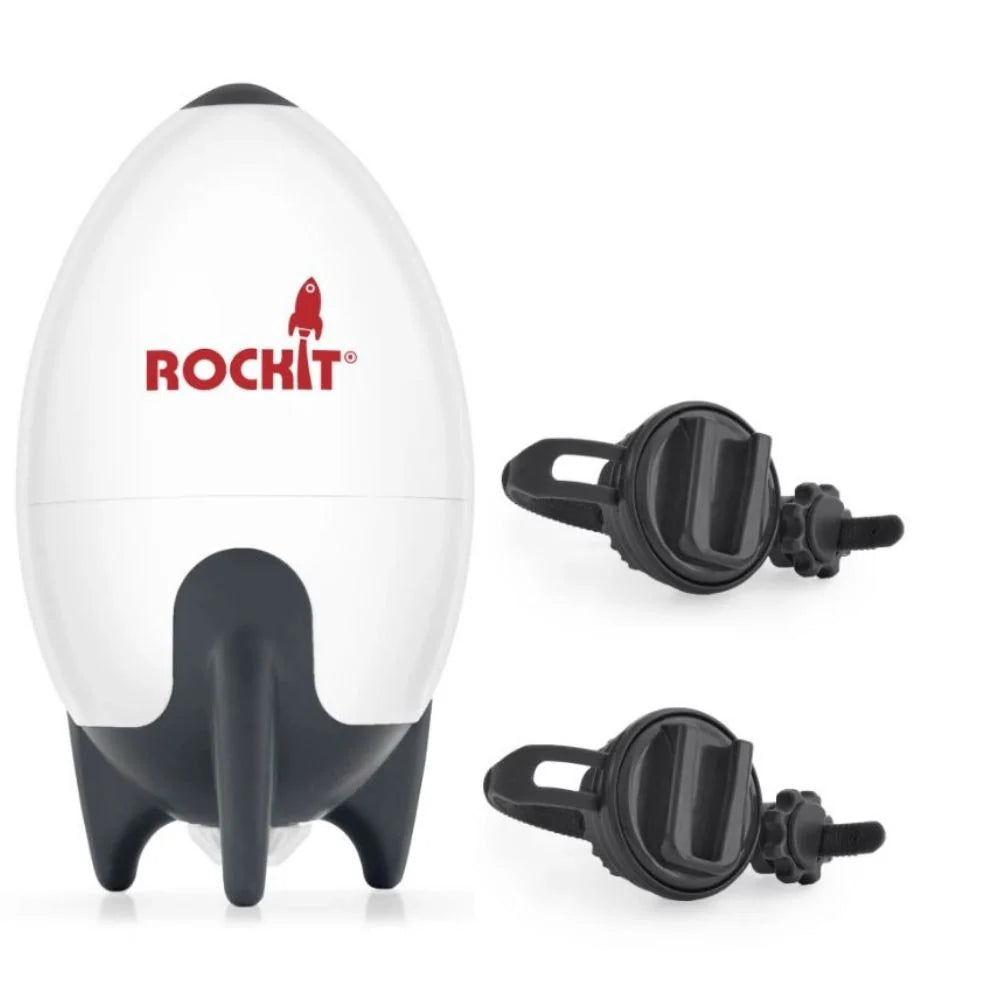News
Choosing the right bedwetting alarm
What's the best bedwetting alarm for my child? At first nocturnal enuresis (best known as bedwetting) sounds like a disease, but it’s not. Even so, in some children it can cause serious embarrassment and poor self-esteem. What is Nocturnal Enuresis? Nocturnal enuresis, in layman’s terms, is bedwetting. If you have a child over the age of six who is wetting the bed, you may have tried everything and now you are wondering if there is any help. There is, and it’s called a bedwetting alarm. How does a bedwetting alarm work? One of the main causes of bed wetting in children is a combination of deep sleeping patterns and over production of urine. Making use of the best bedwetting alarms can help teach a child’s body to better respond to a full bladder, as well as help break the deep sleep cycles that are typical of this behaviour. An electronic bedwetting alarm sounds an alert as soon as a child begins to urinate. Bedwetting alarms are designed to assist bedwetters in training their brains to react to their full bladders by awakening and using the toilet. A bedwetting alarm “senses” moisture as the first drops of urine are released, and sounds a shrill alarm, waking the child. A feeling of bladder fullness will eventually replace the sound of the bedwetting alarm as the signal to the sleeper’s brain that it’s time to get up and visit the toilet. Bedwetting alarm therapy is actually a type of behavioral conditioning. Bedwetting alarms are 100% safe and commonly prescribed by Continence Nurses as a way to stop bedwetting. There are different types of alarms which works in slightly different ways to suit your specific needs. We've found the best bedwetting alarms: Best Bedwetting Alarms #1 Wearable Bedwetting Alarms (with cord) With a wearable alarm, the sleeper places the moisture sensing device in his or her pyjama bottoms or underwear (in the line of fire!). A wearable bedwetting alarm reacts to the urine almost immediately. This type of bedwetting alarm is a design in which the child wears the moisture sensor, which is connected to the alarm device by means of a cord, in or on their underwear or pajamas. The cord usually runs from the sensor under the pyjama top and attaches to the collar of the child's pyjama top. WetStop3 is with little doubt the best wearable bedwetting alarm available in the market today. It is a good cost-effective alarm. #2 Bed-and-Pad Bedwetting Alarms In an alarm-and-pad bedwetting alarm, the moisture sensor is in the form of a pad placed beneath the sleeper. The sewn-in sensors in the pad detect moisture and the alarm sounds. The sensor pad which comes with the Wet Detective from Potty MD has the added advantage of being waterproof, which means you don’t need an extra waterproof pad on the bed (as well as the sensor pad). The pad is also industrial quality so it withstands wash after wash. This is a good option for those children who don’t want to wear an alarm. They are also good for adults, the elderly and those with special needs. #3 Wireless Bedwetting Alarms The third type of bedwetting alarm, the wireless alarm, has a moisture sensor/s which communicate to the alarm unit with a transmitter. No cords or pads are needed. Wireless alarms are the newest technology in bedwetting alarms. The Rodger Wireless Bedwetting Alarm comes with underwear with sewn-in sensors. The added advantage of this alarm over others is that moisture is detected immediately thereby triggering the alarm to sound immediately to wake the child. Another type of wireless alarm is the new Oopsie Heroes Bedwetting Alarm which is technology-based and uses a device/app. A small sensor is placed in the child's underwear 'in the line of fire' and the sensor 'talks' to the device/app. Bed wetting therapy experts have estimated that, with consistent and proper use, the best bedwetting alarms will train children to wake before wetting in around 4 to 10 weeks. Some train much quicker, within days, others take longer. Bedwetting alarms are successful in around eighty percent of young bedwetters. Alarm Type Alarm Type Useful for Advantages Wet Stop 3 Wearable alarm with clipped on sensor and cord Sound and vibration Children Cost effective. Simple to use. Proven success (sold since 1979). Wet Detective Sensor pad on bed and alarm unit beside bed Sound Children Adults Special Needs Elderly Can be set to a loud setting. Pad is waterproof. Simple to use. Comfortable – no cables. Rodger Wireless Alarm Wearable sensors sewn into the underpants with transmitter. Base unit plugged into wall. Sound Children Adults Special Needs Latest technology. Comfortable – sewn-in sensor underpants. No cords. Moisture detected immediately. Vibration device can be attached to wake very deep sleepers or those sharing a room. Can we worn during the day or night. Oopsie Heroes Wearable sensor 'talks' to a device/app Sound Voice (parent) Younger children Special Needs Latest technology. Comfortable - no cords. Moisture detected immediately. Can activate alarm using a recording of parent's voice. Bedwetting Alarm Best Practice Choose the right time. Choose times when routines are not interrupted too much. Talk to your child about how the alarm works and help him get prepared each night (spare pyjamas, night light, change of underpants/bed pad). Make setting the alarm part of your everyday bedtime routine. Do not skip nights. Be POSITIVE! Give plenty of encouragement and stay confident and positive along the way. When the alarm sounds, make sure they wake up completely, get out of bed and switch the alarm off (by themselves) and visit the toilet. Work on daytime toilet habits too. It is important for your child to drink plenty of water during the day and visit the toilet at regular times. To help you do this use a vibrating reminder watch. Avoid using nappies or pull-ups—your child should feel the wetness. For some children it takes time before they wake to the sound of the alarm. Be patient & assist your child with waking when the alarm sounds. With time they will wake by themselves. Remain PATIENT throughout the process. Some children become dry within days, others take weeks. As you continue to use the alarm every night the number of dry nights will begin to outnumber the wet ones. However, during the training process, expect the occasional accident to occur. This is normal as your child’s body develops. Before starting on your journey to dry nights, we would recommend you read the free e-book Wake Up Dry.
Learn more10 tips to combat bedwetting…
Bedwetting can be hugely challenging, both for parents and their bedwetting child. The daily workload of washing sheets and pyjamas, the efforts to keep bedding and mattresses free from urine and not forgetting the frustration and often embarrassment caused from wetting the bed night after night. Remember, you are not alone. Although often not talked about, bedwetting is common amongst 5 and 6 year old's and up to 30% of this age group still wet their bed. Children reach milestones at different ages in their life and learning to control their bladder at night is another developmental milestone. Bedwetting is often hereditary and despite how you may sometimes feel, bedwetting it not your child’s fault. Almost all children want to stop, but simply can’t. Here are some tips to help you and your child combat bedwetting once and for all: Increase daytime fluids and toilet visits. Research suggests that children who drink water throughout the day and visit the toilet regularly will improve their bladder health resulting in improved night time dryness. Use a Vibrating Reminder Watch to remind your child to drink fluids and visit the toilet regularly throughout their day. In simple terms teach your child how their bladder works. Encourage him to ‘take his time’ and relax on the toilet. Children who rush often don’t empty their bladder completely. Rule out constipation. Even though you may not think your child is constipated, it's important to make sure it isn't a problem. Solving any constipation issues is your first step to dry nights. Don't offer incentives. Offering your child a new bike or toy to stop wetting the bed can result in frustration and disappointment. Encouraging your child is good, but don’t set him up to fail. If he could stop, he would stop. Don’t restrict fluids. While it is true that drinking too much before bed can contribute to wetting, it’s often not the cause of bedwetting. Avoid fizzy or caffeinated drinks but don’t go overboard restricting fluids, instead, encourage regular fluid intake throughout the day. Don’t lift your child to the toilet each night. Lifting is of little use, and may even prolong the problem. Your child has to get used to waking up when his bladder is full. Children often do not remember being lifted, and it usually does not help to achieve their own bladder control. Avoid nappies or pull-ups. If you and your child are ready to address bedwetting, then avoid using nappies or pull-ups. He needs to feel the wetness in order to engage his brain to recognise the sensation to urinate. Rule out medical causes. Check with your doctor to ensure your child has no underlying medical conditions which may be contributing to their bedwetting. This is especially important if you child has been dry at night and unexpectedly starts wetting. Don’t wait too long to address the problem. Many children simply grow out of bedwetting but if you get to the point where your child is frustrated or embarrassed, then take steps to address the bedwetting now. In combination with the above tips, a bedwetting alarm is the mostly commonly-used solution to bedwetting. Bedwetting alarms teach your child's subconscious reflex in the brain to recognise the sensation they need to visit the toilet or 'hold on' until morning. Bedwetting alarms are 100% safe and recommended by specialists. Our final piece of advice is to seek help & reliable information. Coping with a child who wets the bed every night is hard work. There is plenty of conflicting advice around this topic, so do your own research. We've put together a comprehensive, easy-to-read guide around bedwetting and solutions. You can download our FREE e-book on bedwetting here.
Learn moreOne Mum's Relief Story...
I sometimes look back at the years since being a parent and much of it seems like a blur. At each age and stage, there’s a new challenge and with the years that go by I understand that each phase will pass and then there’s a new set of challenges to face. I have to say though, the bedwetting phase for us has been a biggie. People kept saying, “he’ll grow out of it”. But we kept waiting and waiting, and he just wasn’t showing any signs of growing out of it. We were head to foot in washing every morning, which is hard-going in the middle of winter trying to get bedding washed and dried. We were sick of it and so was our 6-year-old. He wet so heavily that the pull-up wouldn’t contain the wee. We seriously tried EVERYTHING to get him dry. We tried restricting his drinks at night, lifting him to the toilet. We even offered to buy him a new bike if he could stop wetting. But he still couldn’t stay dry. It wasn’t his fault. Like most mums, I started googling for answers. I came across a free e-book on the moosebaby website and it answered a lot of questions. I realised there were some proactive things we could be doing to end the bedwetting. Once we’d ruled out a few health factors (like no UTI’s or constipation), we increased his water intake during the day and set ourselves up with a bedwetting alarm, we felt we were on the right track. We opted for the Oopsie Heroes Bedwetting Alarm. It seemed to tick all the boxes and the reviews I read about it were good. When we were looking for an alarm there were lots that looked kinda scary, but this one seemed kid-friendly. When the alarm arrived, he was super-excited to get going with it. We were all desperate for some dry nights. It was easy to set up and he liked the idea of using the app. We had fun setting with the alarm sounds and recording our voice to use as a wake-up alarm. Our son is a deep-sleeper which we think was part of the problem. He sleeps through everything. At first he slept through the alarm going off, but because we’d read the e-book, we knew this was common and we knew we’d need to wake him for a while. By night 4 his brain clicked and he woke by himself. Each night the alarm went off we helped him wake up enough to switch off the alarm and finish off weeing in the toilet. At first it was like getting up to a newborn again. Hard-going! But we were determined and knew it would be worth the effort. We headed into our second week and we had our first dry night. When he woke in the morning, he was stoked and super-proud of himself. We were up and down a bit for another week, but by the third week we hit a turning point. Dry, dry and dry, every night! The relief! Why hadn’t we tried this earlier?!? We kept using the alarm until he had two full weeks of dry nights in a row. For any parent dealing with soaking wet sheets every day, you’ll appreciate the relief. It’s not only the wet bed, as they get older it was a problem for sleepovers and camping holidays. All that worry has now gone. I’d totally recommend this alarm. Jane from Moosebaby asked me to write a review and I was more than happy to do so. Honestly, if you were like us, and ready for a solution, don’t hesitate. Learn More about Oopsie Heroes Bedwetting Alarm
Learn moreHow does a bedwetting alarm work?
If your child is around 5 or 6 years of age and still wetting at night, bedwetting alarms aim to help your child wake when recognising the sensation to urinate. An alarm teaches your child's brain to respond to a full bladder, even during sleep. When exposed to wetness (urine) the alarm makes a loud noise to wake your child. The sound needs to be loud enough and quick enough to wake your child prior to complete bladder emptying. When beginning your child will wet and the alarm will sound. Your child (and you) will wake up and you will need to take him to the toilet to completely empty his bladder of any “left over” urine. Initially your child is likely to empty his bladder before reaching the toilet, but with practice this should improve. Using the alarm every night and waking up just after wetting should eventually teach your child's brain to wake up prior to wetting. With time, wetting will happen less frequently and eventually your child will stop wetting altogether. Once your child establishes a consistent pattern of waking during the night prior to wetting then you will no longer need the alarm. Some children stop wetting within days or weeks, other children and can 2-3 months to stop wetting. Bedwetting alarms are the most commonly used tool to help children stop wetting the bed. They are recommended by Continence Nurses and they're 100% safe. Which alarm is best for my child? "My 6yo daughter is such a heavy sleeper we couldn’t get her out of overnight nappies, despite being out of day nappies extremely early. We’ve been using your Rodger Bedwetting Alarm for about 3 weeks consistently and she is now waking herself up once a night (beating the alarm essentially) to go to the toilet. The progress seemed to have come in stages from the alarm going off while she did a pee then she learned to hold most of the pee in when the alarm went off until now finally she is beating the alarm and getting up to pee herself before she lets any go in bed. It’s been such a success and we’re so proud of her. Of course it was a little scary for her at first, a gadget she wasn’t familiar with. We spoke to her about it, tested the alarm together so she knew what to expect and what it sounded like and let her know that there was no pressure and we could just give it a try without expectation. Well we are so happy now it’s been 4 nights of beating the alarm and will now take the alarm away to see how she goes….keeping it close to use again if she slips backwards. Thank you again for the great product and very quick postage." Learn more about the Rodger Wireless Bedwetting Alarm
Learn moreHelp, my son sleeps through the bedwetting alarm
My 7 year old son is a very deep sleeper and for the first 3 nights of using the alarm he has slept through the sound. It is very loud and we can hear it. What should we do? Firstly, this is very common when beginning to use a bedwetting alarm. Many bedwetters are deep-sleepers. At first, your child’s brain isn’t familiar with the alarm sound and doesn’t realise that an important response is required. Our children are also conditioned to allow their parents or caregivers to deal with loud or unusual noises during the night. Interestingly, research conducted by manufacturers of smoke alarms also reflects this phenomenon. The research discovered, many children sleep through the extremely loud sound of a smoke alarm and it’s not until their parents go to their room and say their name that they actually wake up. At the start, the alarm is for the parents or caregivers. Initially you will need to respond to the sound by going to your son's room, waking him and helping him turn off the alarm and walk to the bathroom. By doing this every time the alarm sounds, over time his body will begin to relate the alarm sound with a full bladder and the need to walk to the toilet and release his bladder. Within a few weeks, you should see him waking to the alarm, sitting on his bed or trying to turn off the alarm. You will also begin to see smaller wet patches in his bed with more urine left to empty in the toilet when he reaches the bathroom. It is important that you can hear the alarm. If your room is far away, using a baby monitor or getting a second base unit for your room is a good option. Another option is to share his room for a short time. Some children need to urinate once a night, others more often and the need to urinate can occur any time in your son's sleep cycle. When in deep REM sleep and in the first few hours of falling asleep, children can frequently be disoriented, crying or saying funny things. At first you’ll need to lead him gently in the direction of the toilet and give him instructions. He most likely will not remember any of this in the morning. Do not be discouraged by this. He will still make progress even without a clear memory of the night before. As your child learns to respond to the alarm sound on his own, your role will be less significant. You can listen from your room and make sure he is getting to the toilet. If you don't hear him responding, remind him what to do. Make sure he does not turn off the alarm and go back to sleep without walking to the toilet as this will delay his progress. A good guide is to have your child wear the alarm until he has 2 successive weeks of dry nights, then every other night until he has 2 more weeks of dryness. The average child takes around 10-12 weeks to achieve this. As long as he is making progress, continue to use the alarm. Learn about our Best-Selling Alarm
Learn more









